Content |
|---|
History
The origins of the English Setter they are quite confusing, but they seem to date back to the Middle Ages. It is believed to be descended from the Oysel Dog and ancient Spanish flagger breeds that were brought to England.. The breed settled around 1860 thanks to the work of Edward Laverack and after R. Purcell Llewellin, two breeders who established a selective breeding program to stabilize English setters.
Laverack bred a practically pure line of very willful and elegant dogs. Llewellin crossed the Laverack dogs with the English Setter and then with him Setters Gordon. From these crosses a strain especially competent for hunting emerged.
It was at this time that the English Setter began to be recognized internationally. Came to france, and more generally to continental Europe, in 1880. But, was not up 1963 when the breed was officially recognized by the FCI.
Its great hunting qualities make it the most widely used pointer in France today.. He usually wins national and international hunting contests. But, it is also appreciated for its beauty, and is featured frequently at dog shows. So, we distinguish between lines of beauty and lines of work, depending on the use made of the animal.
Physical characteristics
The English Setter is the type of Pointing Dogs medium in size with a solid and compact body.
Its coat is flexible and smooth, with fringes on the ears, the chest, legs and tail. Five coat colors are allowed: black and white, Orange and white, lemon and white, brown and white and tricolor.
The tail is of medium length, carried low and placed on the back.
Size and weight
-
▷ Male size: Of 65 to 68 cm.
▷ female size: Of 61 to 65 cm.
▷ Male weight: Of 18 to 23 kg
▷ female weight: Of 18 to 22 kg
Character and skills
The English Setter he is a very friendly partner, even with children or other dogs. But, living with small animals requires early socialization so you don't see them as prey.
It is an excellent companion dog, easy to live with and completely devoted to his family, which he will cover with affection. Intelligent, friendly, Tender, quiet, playful and faithful, will brighten up your home. Sensitive and very attached to his master, can't stand loneliness.
By your selection, it's mostly a hunting dog, so you need activity. A house with a garden in the country is ideal for him. But, an urban life in an apartment is possible, as long as it provides you with enough opportunities to exercise: two outputs of 30 minutes a day is a minimum. He will also be happy to accompany his master on bike rides or jogging. In any case, It is not a recommended dog for an elderly or very sedentary person.
Last, hunting instinct is generally highly developed in the English Setter. If it is intended for this use, it is advisable to adopt a puppy from a line of work. In fact, beauty lines are selected with aesthetic criteria and, Therefore, are potentially less effective. But, in any case, it is a breed that tends to dig and chase prey: fencing your ground is strongly recommended to prevent any dog ​​escape.
Education
Very intelligent, the English Setter has a good aptitude for dressage. But, need a gentle education (although not without firmness), because his sensitivity does not admit brutality. Brutality would make him fear.
Like any hunting dog, learning to remember will be essential so that you do not get carried away by your instincts.
Health
The English Setter is in fairly robust overall health.
But, their floppy ears make them prone to canine ear infections, especially because they are dogs that do not hesitate to get into the water. It can also be affected by skin diseases such as atopy.
Last, this breed has a predisposition to congenital deafness, thyroid problems or hip dysplasia. The latter being partially hereditary, it is advisable to check the health of the stallions with the breeder of English Setter.
Grooming
The English Setter requires weekly brushing. During the molting period, which takes place twice a year, should be even daily. It also, her fringes of hair should be trimmed to maintain her signature look. This operation can be done at home or entrusted to a dog groomer.
Under normal circumstances, it is not necessary to bathe the dog. But, when hunting, the English Setter does not hesitate to get into the water, sometimes muddy: in this case, it may be convenient to provide him with a dog shampoo to help him regain his whiteness.
It also, you have to check your floppy ears after every outing, especially if the dog has been swimming, to avoid any ear infection.
Use
The english setter is originally a hunting dog (Pointing Dogs). Today, it is also highly appreciated as a companion dog.
It also, its beauty and elegance make it a recognized show dog.
Life expectancy
14 years
Characteristics "English Setter"
Coexistence is important that you have with your new friend. Before considering the acquisition of a dog of the breed "English Setter" you know certain factors. Not all breeds of dogs are apt to live in an apartment, you must take into account his character, their need for exercise, their interaction with other pets, their care and if you have small children, their level of tolerance towards them.
Adaptation ⓘ2.0 out of 5 stars (based on 1 review)
|
friendly dog ⓘ4.0 out of 5 stars (based on 1 review)
|
hair loss ⓘ3.0 out of 5 stars (based on 1 review)
|
|---|---|---|
Affection level ⓘ5.0 out of 5 stars (based on 1 review)
|
Need for exercise ⓘ5.0 out of 5 stars (based on 1 review)
|
Social need ⓘ5.0 out of 5 stars (based on 1 review)
|
Home ⓘ3.0 out of 5 stars (based on 1 review)
|
Toilet ⓘ3.0 out of 5 stars (based on 1 review)
|
Friendly with strangers ⓘ2.0 out of 5 stars (based on 1 review)
|
barking ⓘ3.0 out of 5 stars (based on 1 review)
|
Health ⓘ3.0 out of 5 stars (based on 1 review)
|
Territorial ⓘ2.0 out of 5 stars (based on 1 review)
|
Cat friendly ⓘ2.0 out of 5 stars (based on 1 review)
|
Intelligence ⓘ4.0 out of 5 stars (based on 1 review)
|
Versatility ⓘ3.0 out of 5 stars (based on 1 review)
|
Child friendly ⓘ5.0 out of 5 stars (based on 1 review)
|
Surveillance ⓘ2.0 out of 5 stars (based on 1 review)
|
joy ⓘ5.0 out of 5 stars (based on 1 review)
|
Images "English Setter"
Photos:
1 – English Setter, Dogs Show Racibórz RAVEN WHITE Magenta by I, Lilly M, CC BY-SA 3.0, via Wikimedia Commons
2 – English Setter in Tallinn, duo CACIB, 17-18 Aug 2013 by Thomas, CC BY-SA 3.0, via Wikimedia Commons
3 – English setter working in the field by Dmitry A. Mottl, CC BY-SA 3.0, via Wikimedia Commons
4 – English Setter Puppy at 2 and a half months of age by Immotilla, CC BY-SA 4.0, via Wikimedia Commons
5 – English Setter by Villa16, CC BY-SA 3.0, via Wikimedia Commons
6 – Liver belton English Setter. by Canarian, CC BY-SA 3.0, via Wikimedia Commons
Videos "English Setter"
Type and recognitions:
- FCI CLASSIFICATION: 2
- Group 7: Pointing Dogs
- Section 2: British and Irish Pointers and Setters. 2.2 Setter. With proof of work..
Federations:
- – FCI – Group 7: Pointing Dogs. – Section 2: Continental Pointing Dogs. 2.1: Pointer ⓘ
- – AKC – Sporting ⓘ
- – ANKC – Group 3 (Gundogs) ⓘ
- – CKC – Sporting Dogs ⓘ
- – KC – Sports ⓘ
- – NZKC – Gundog ⓘ
- – UKC – Gun Dogs ⓘ
FCI breed standard "English Setter"
Alternative names:
1. Lawerack, Llewellin (or Llewellyn) Setter (English).
2. Setter Laverack (French).
3. Englischer Setter (German).
4. (em inglês: English Setter) (Portuguese).
5. Setter Llewellin (o Llewellyn), Setter Lawerack (o Laverack) (español).
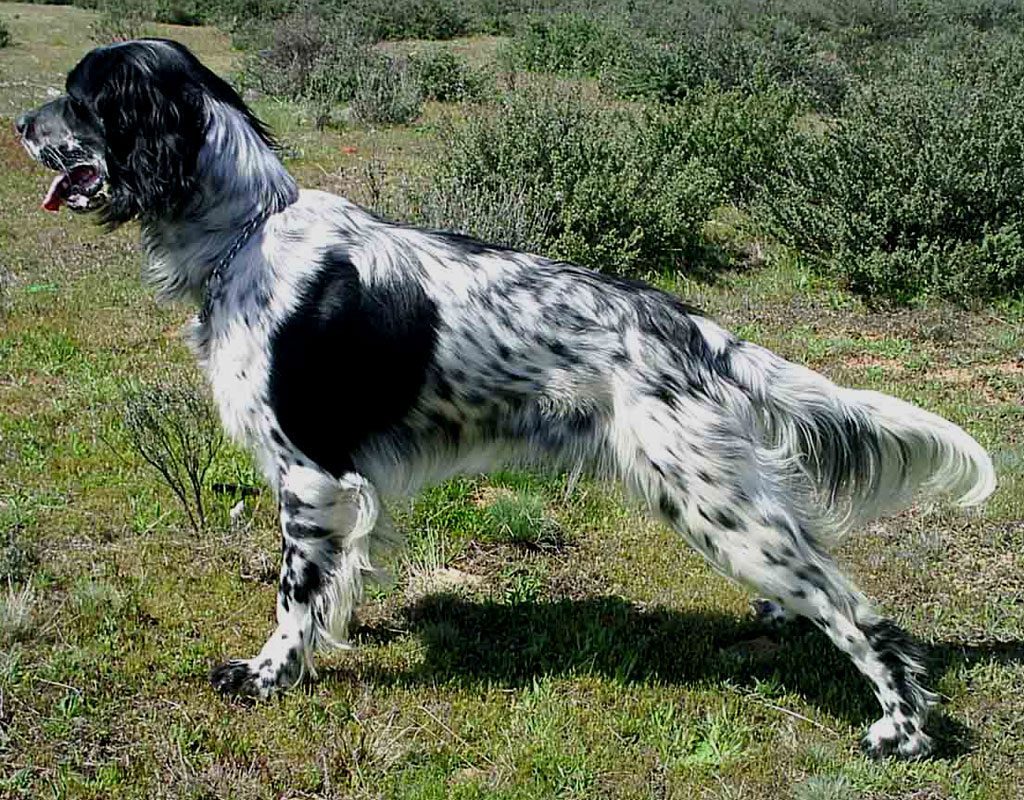
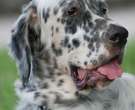
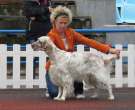
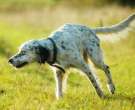
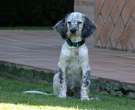
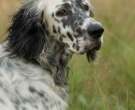
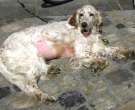
 English Setter Field Tests | Too Cute!
English Setter Field Tests | Too Cute! The English Setter – Bests of Breed
The English Setter – Bests of Breed the english setter – Hunting dogs.
the english setter – Hunting dogs. Setter Ingles – Royal Canin Dog Breeds
Setter Ingles – Royal Canin Dog Breeds